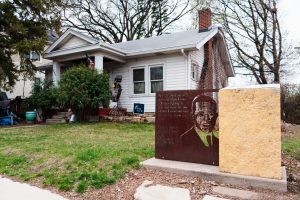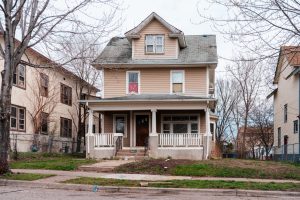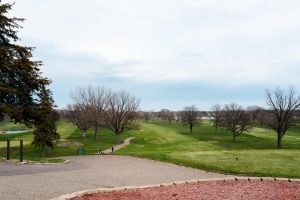The National Park Service gave the Minneapolis Department of Community Planning Economic Development (CPED) $75,000 in grant money to address the underrepresentation of African American history among local and national listings on the national registry.
Of the approximately 150 places listed on the National Register of Historic Places in Hennepin County, only three are dedicated to African American history — the Arthur and Edith Lee House, the Lena O. Smith House and the Hiawatha Golf Course. Out of the over 200 local landmarks and historic districts identified by the city, seven recognize African American history.
Erin Que, a senior city planner on CPED’s historic preservation team, said funding for the Underrepresented Communities Grant will start summer of 2025, while the Legacy Grant will be used within the next year.
“We’re going to work on the Legacy Grant for the next year to write the context study, so this will be a big narrative history of African Americans in Minneapolis,” Que said.
Que said at least three more places associated with African American heritage will be nominated.
The National Registry recognizes sites of significant events, people, or architectural or engineering work, Que said.
Many sites associated with the Twin Cities African American community were destroyed by government actions, University of Minnesota design professor Greg Donofrio said.
“When we think about the types of historic sites that might have been designated, so many were lost,” Donofrio said. “That is why it is so critical for some of the African American community to save these sites that remain.”
Arthur and Edith Lee House

The Arthur and Edith Lee House is located at 4600 Columbus Ave. in the Field Neighborhood of south Minneapolis. Arthur and Edith Lee were Black parents who moved to an all-white neighborhood with their six-year-old daughter in 1931, according to the American Association for State and Local History.
Arthur Lee was a World War I veteran and U.S. Postal Service worker. Shortly after moving in, neighbors began to harass the family by yelling racial slurs and threats.
The crowds outside of their house slowly began to increase as time went on, sparking one of Minnesota’s largest racially motivated protests in history. Police were sent to maintain the peace but were of little help to the Lees. Arthur Lee’s union co-workers, other World War I veterans and prominent organizations like the NAACP defended the Lee family during this time.
Donofrio said he helped write the nomination of the Lee House to the National Registry and spoke with elders in the south Minneapolis community to understand how they wanted the community’s African American history to be reflected.
“All communities, all identities have places that they find meaningful and significant and historic for one reason or another,” Donofrio said. “Understanding that significance through their eyes and understanding how and why they might want to see it preserved or honored has been what I’ve dedicated most of my career to, and [I’m] trying to, in an ethical way, develop that understanding with them, not for them.”
The house was added to the National Register of Historic Places in 2014 to symbolize the effect of and resistance to housing discrimination against African Americans in Minneapolis.
Lena O. Smith House

The Lena Olive Smith house is located at 2905 Fifth Ave. S. in south Minneapolis. Smith lived from 1885 to 1966 and was a prominent figure in Minneapolis during the early- to mid-20th century.
She was the first female African American lawyer in Minnesota and the first female president of the NAACP’s Minneapolis chapter. She also helped establish a local chapter of the National Urban League in Minneapolis and worked as the Lee family’s lawyer.
Donofrio said Smith is an important figure for civil rights, given her work as both a lawyer and activist.
“She was among the foremost civil rights advocates of the 20th century in Minneapolis,” Donofrio said.
The Smith House joined the National Registry in 1991 due to Smith’s contributions to both Minneapolis and U.S. history.
Hiawatha Golf Course
The Hiawatha Golf Course is the third place in south Minneapolis on the National Registry associated with African American history.

Charles Birnbaum, the founder of the Cultural Landscape Foundation, said the course was one of the first integrated golf courses in the Midwest. The course was desegregated in the 1930s, while the clubhouse was not until 1952.
“It’s pretty special that it has managed to survive as long as it has and with a very high degree of integrity,” Birnbaum said. “If you go there and you step on that green, it’s very much like it was historically.”
In 1939, the Minnesota Negro Open Golf Tournament was founded by the honorary mayor of Bronzeville, Jimmy Slemmons, before a name change in 1954 to the Upper Midwest Bronze Amateur Open, also known as “The Bronze,” reflecting its unrestricted entry policy.
University history professor David Chang said in a statement to The Minnesota Daily that these projects can teach Minnesotans about African American history and inspire action to face racial inequalities today.
Birnbaum said creating places dedicated to African American history is important.
“African American history is American history,” Birnbaum said. “It’s part of the story of who we are as a people.”























Judy Clayton
Apr 23, 2024 at 8:54 pm
Thank you for the excellent research and in-depth interviews of people who speak so knowledgeably and colorfully about these Legacy locations and homes and African Americans who very much deserve to be profiled by your well written article. This is important information and you deserve accolades as well for featuring the Legacy grant in The Minnesota Daily.
Robbyn Overall
Apr 18, 2024 at 2:32 pm
The correct location of the Lena Olive Smith residence is 3905 Fifth Avenue South.
Drew Bromley
Apr 17, 2024 at 8:36 am
This is awesome, great job to those who made this happen!